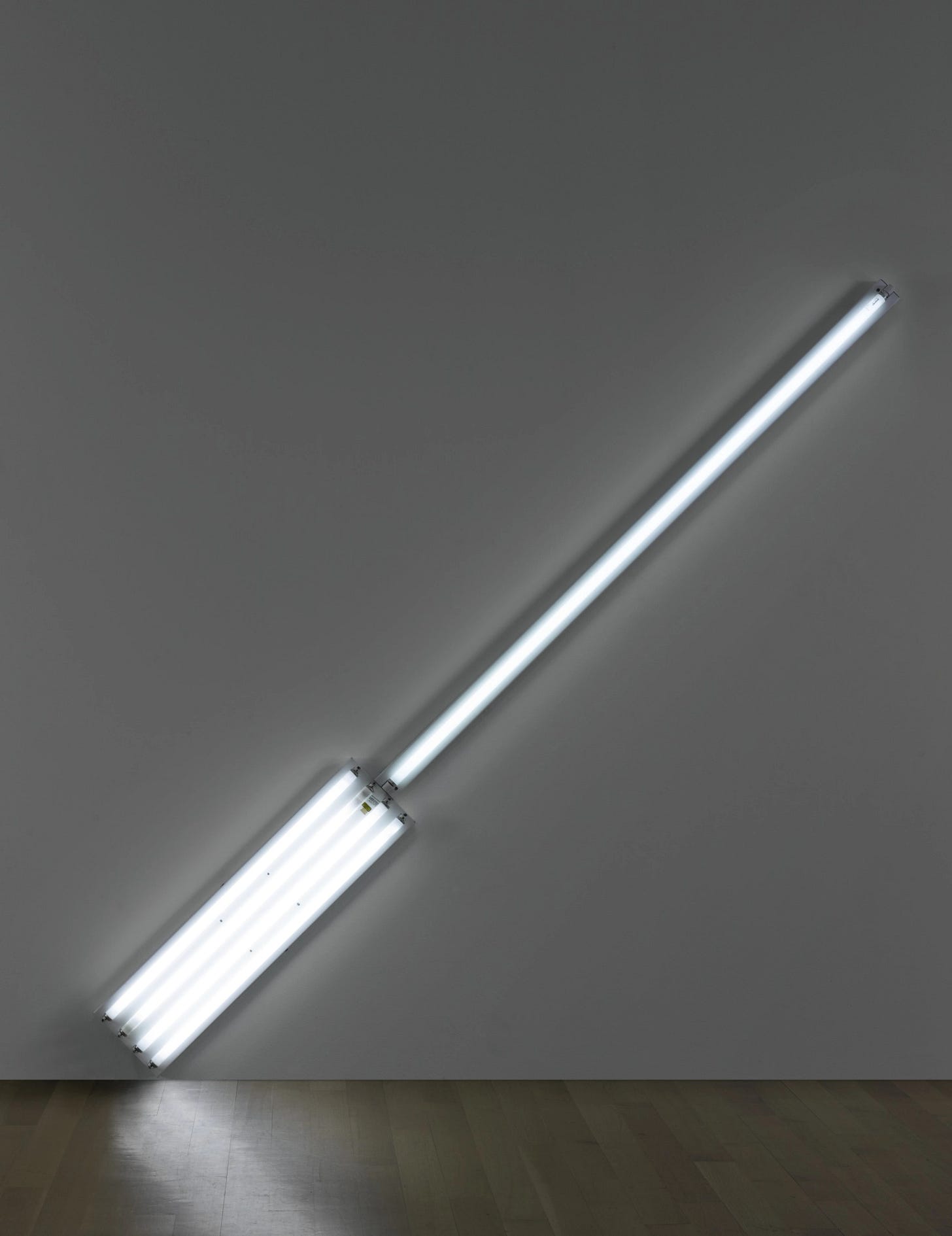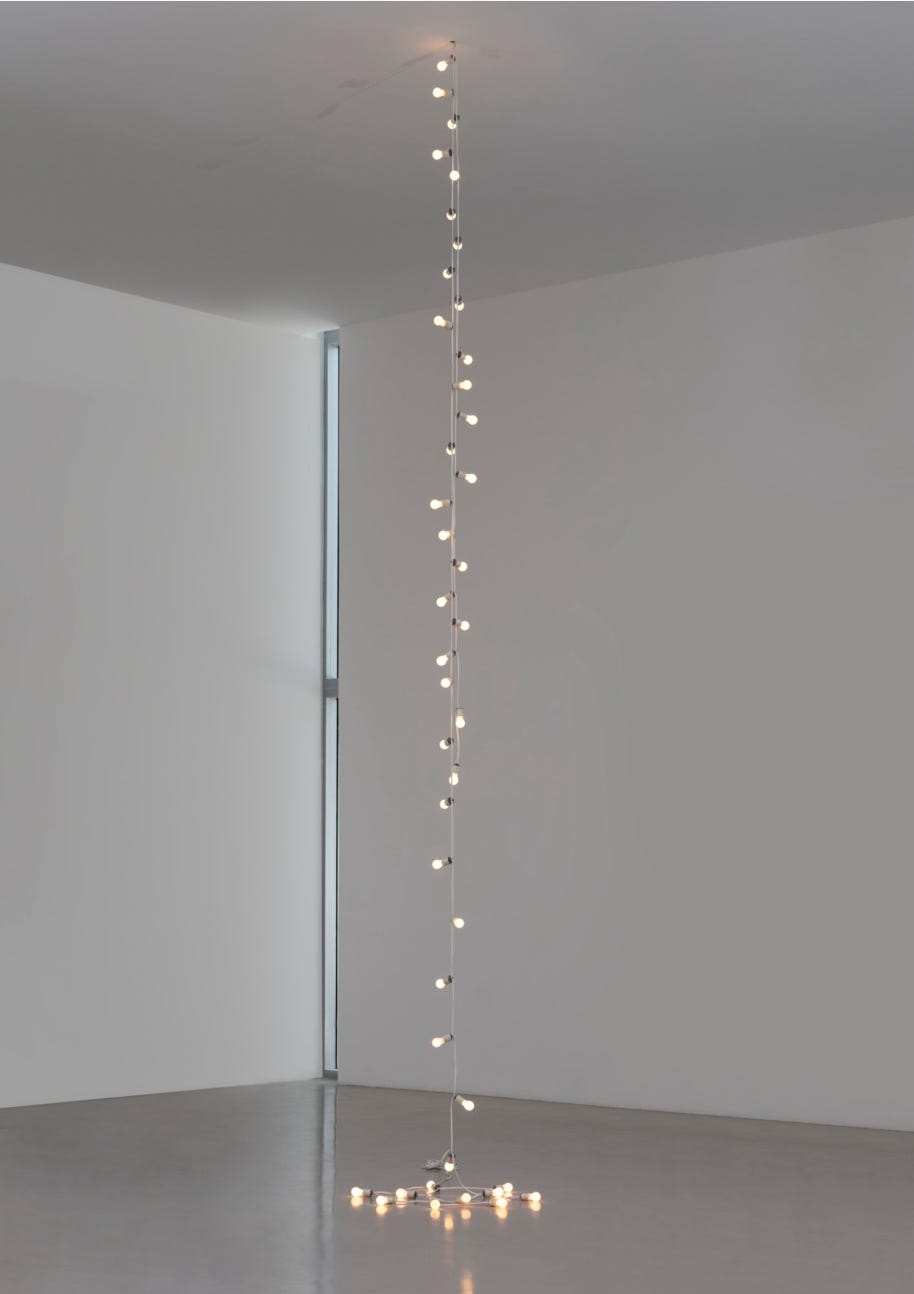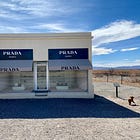Minimalism, My "I Could Do That" Love Story
An antidote about Dan Flavin, minimalist sculpture, and turning art skeptics into believers.
I’ve always felt the best part of my job is converting people from "I could do that" to "I love that." The strongest case study? My husband.
Craig and I had been dating for a little while when we decided to visit the National Gallery of Canada. I had never been, so I did what I always do and marched straight to the contemporary wing. We wandered through the galleries, passing Donald Judd’s sleek sculptures, Andy Warhol’s Brillo Boxes, geometic paintings by Frank Stella, and a Sol LeWitt wall drawing. Then, around the corner, came a glow of red, emanating from a Dan Flavin light sculpture tucked into the corner.
Now, keep in mind, this was almost a decade ago, about five years into Instagram’s rise, but before art had fully reached peak “Instagram-worthy” status. This was pre Kusama mirror selfies, pre James Turrell light room line ups. So the flattering glow of Dan Flavin’s work wasn’t yet familiar social media fodder; it was just mysterious.
As we moved through the contemporary wing, Craig grew increasingly skeptical of what we were looking at. Minimalism? Boring. Conceptual works? Confusing. But the breaking point? That glowing Flavin.
“This just looks like outdated technology," he finally said. His version of "I could do that."
The “I Could Do That” Phenomenon
We’ve all heard it before, and maybe we’ve even said it ourselves. Some works of art have a way of making people ask: What makes this art? Where’s the effort? The technical skill?
I knew that convincing Craig required a different approach. Instead of diving into a lecture on artistic intent, I pivoted to something practical that might align with his interests: the art market.
"A work similar to that 'outdated technology' sold for over $3 million last year."
A year prior, Sotheby’s in New York had set a record for Flavin’s Alternate Diagonals of March 2, 1964 (to Don Judd), hammering at $3.1 million.
Say what you will about the art market, but sometimes, a price tag is the gateway to understanding. Suddenly, Craig was willing to stand a little longer, take in the work, and consider what made it significant.
If you could do that… then why haven’t you?
That’s the thing about art, it’s not just about execution. It’s about context, innovation, and vision. Flavin wasn’t just installing fluorescent lights in a gallery; he was redefining how we experience color, space, and light. And his ability to do so garnered him recognition in global museums, from Ottawa to Tokyo, and a loyal group of blue-chip collectors to match.
How the Market Validates Minimalism
There is so much beauty in “I can do that” art. To prove it, I’ll leave you with some favorite examples of minimalist sculpture. (With the caveat that these works may also appeal to the Craigs of the group — or those interested in record prices, too.)
Felix Gonzalez-Torres, "Untitled" (America #3), 1992
Price realised: $13.6 million | Christie’s | May 2024, The Rosa de la Cruz Collection
Donald Judd, “Untitled” (Bernstein 89-24), 1989
Price realised: $10.2 million | Christie’s | November 2012
Larry Bell, “Untitled,” 1969
Price realised: $605,000 | Sotheby's | November 2023
Richard Serra, “LA Cone,” 1986
Price realised: $4.3 million | Christie’s | November 2013
So the next time you find yourself questioning everything I’ve said… yes, you probably could do that, but you didn’t.
Until next time…
xx Bronwyn
Further reading…













I have exactly the same 'case study'! My husband's favourite is Basquiat and ' a child could do it' 😄